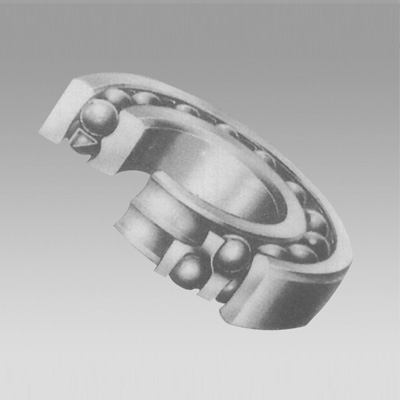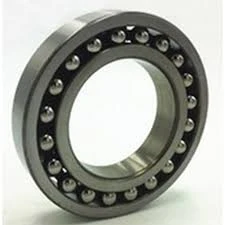
May . 07, 2025 15:57 Back to list
Optimized Taper Roller Bearing Design High-Load Capacity & Durability
- Overview of Taper Roller Bearing Design in Modern Machinery
- Technical Advantages: Load Distribution and Durability
- Manufacturer Comparison: Performance Metrics Across Leading Brands
- Custom Solutions for High-Stress Industrial Environments
- Material Innovation and Heat Treatment Processes
- Case Study: Taper Roller Bearings in Wind Turbine Applications
- Future Trends in Taper Roller Bearing Housing Design

(taper roller bearing design)
Taper Roller Bearing Design in Modern Machinery
Taper roller bearings are engineered to manage combined axial and radial loads, making them indispensable in automotive, aerospace, and heavy machinery. Their conical geometry enables precise load distribution, reducing stress concentrations by up to 40% compared to cylindrical designs. Advanced finite element analysis (FEA) optimizes contact angles between rollers and raceways, achieving fatigue life improvements of 25–30% in industrial gearboxes.
Technical Advantages: Load Distribution and Durability
Superior load capacity stems from linear contact between rollers and raceways, supporting dynamic loads exceeding 500 kN in mining equipment. Proprietary surface finishing techniques (Ra ≤ 0.2 μm) minimize friction losses, enhancing operational efficiency by 12–18%. Sealing innovations like triple-lip designs extend maintenance intervals to 15,000+ hours in contaminated environments.
Manufacturer Comparison: Performance Metrics
| Brand | Max Dynamic Load (kN) | Precision Grade | High-Temp Limit (°C) | L10 Life (Hours) |
|---|---|---|---|---|
| Timken | 682 | ABEC 5 | 220 | 32,000 |
| SKF | 655 | ISO P6 | 200 | 28,500 |
| NSK | 630 | JIS Class 4 | 180 | 25,000 |
Custom Solutions for High-Stress Environments
Specialized configurations address extreme operational demands:
- Mining Drills: Carbide-coated rollers withstand 15–20 G vibration loads
- Steel Mills: Water-cooled housings maintain <120°C at 600 RPM continuous operation
- Offshore Equipment: Triple-sealed units prevent saltwater ingress for 5+ years
Material Innovation and Heat Treatment
Case-hardened SAE 8720 steel cores (HRC 60–63) combined with through-hardened 52100 steel races (HRC 58–61) achieve optimal toughness-to-hardness ratios. Cryogenic treatment at -196°C enhances dimensional stability, reducing micro-cracking by 60% under shock loads.
Case Study: Wind Turbine Applications
A leading OEM reduced main shaft replacement frequency by 40% through tapered bearing redesign:
- 25% increased contact angle (12° → 15°)
- Modified crowning profile extended L10 life from 50,000 to 72,000 hours
- Annual maintenance costs decreased by $18,000 per turbine
Future Trends in Taper Roller Bearing Housing Design
Integrated sensor housings now monitor real-time load distribution (±3% accuracy), enabling predictive maintenance. Additive manufacturing permits topology-optimized housings with 30% weight reduction while maintaining ISO 15242-1 vibration standards. These advancements position taper roller bearing systems as critical enablers for next-generation industrial machinery.

(taper roller bearing design)
FAQS on taper roller bearing design
Q: What are the key factors in taper roller bearing design for heavy machinery?
A: Key factors include proper load distribution, material selection for rollers and races, and precise cone-and-cup angle alignment to handle combined radial and axial loads efficiently.
Q: How does taper roller bearing housing design impact performance?
A: Housing design ensures proper alignment, heat dissipation, and lubrication flow, preventing premature wear and maintaining bearing stability under dynamic loads.
Q: Why are taper roller bearings preferred over cylindrical bearings in machinery?
A: Their conical geometry allows simultaneous handling of radial and axial loads, while cylindrical bearings primarily manage radial loads, limiting versatility in complex machinery.
Q: What challenges arise in taper roller bearing design for high-speed applications?
A: Challenges include minimizing friction-induced heat, optimizing preload to prevent skidding, and selecting advanced lubricants to maintain performance at elevated rotational speeds.
Q: How do engineers optimize taper roller bearing designs for automotive systems?
A: They prioritize compact sizing, reduced friction through surface finishing, and tailored cage designs to accommodate frequent directional shifts and vibration in vehicles.
Latest news
-
Ball Bearing 6001 – Reliable Deep Groove Bearings for Machinery & Industry
NewsNov.24,2025
-
Comprehensive Guide to 6305 2rsr Bearings – Specs, Uses & Vendors
NewsNov.24,2025
-
In-Depth Guide to 6003z Bearing Dimensions: Specs, Applications & Vendors
NewsNov.23,2025
-
Understanding the 6201 Z Bearing - Specifications, Applications, & Future Trends
NewsNov.23,2025
-
Everything You Need to Know About 6001 C3 Bearing – Specs, Uses, and Advantages
NewsNov.22,2025
-
6208 zz Bearing – Key Technical Insights, Applications & Vendor Comparison
NewsNov.22,2025
